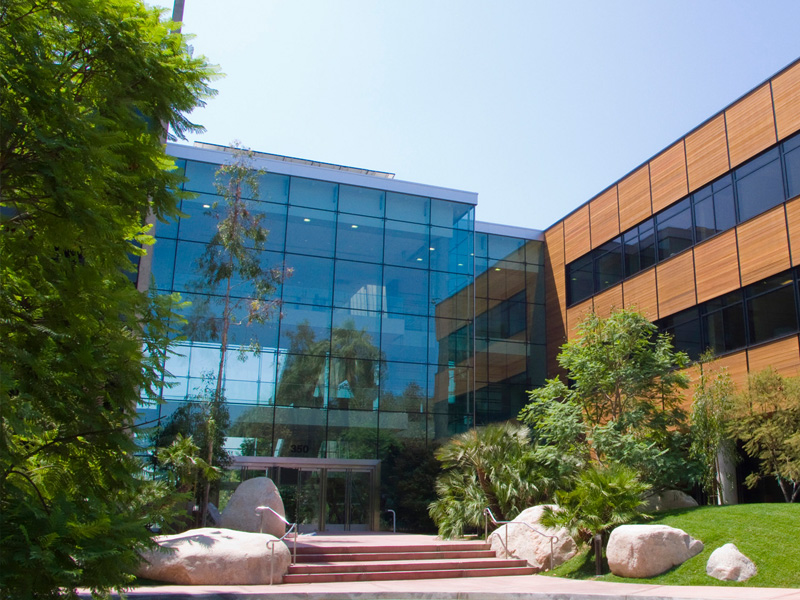
Check out my blog post on the ExCiteS blog on the session Claire Ellul and I held at the Royal Geographical Society’s Annual Conference 2016.
The Future of GIS

As I’m gearing up to write a paper for a conference, I’m doing a bit of research for it in regards to GIS and general trends of the future. To begin, I decided to re-watch an inspirational TED talk that a friend shared with me called “Not Recession but Transformation”, given by Edie Weiner, president of The Future Hunters. In her talk, she states that many lost their jobs during the recession of 2008 because the economy was transitioning from the Emotile Economy to the Metaspace Economy, and that this is a recurring event that happens during economic transition periods (like between the Agricultural, Industrial, and Post-Industrial Economies). The Metaspace Economy, which focuses on the importance of space, is divided into (at the time of this talk, eight, but now) ten categories – all I feel current/future GIS may be able to positively contribute to – which are as follows:
- INNER-SPACE: mapping of the brain; surely if GIS can map and analyse nodes and networks for roads we can extend that to neural pathways.
- OUTER-SPACE: satellites and space exploration; let’s start collecting real-time information on this planet and others!
- CYBER-SPACE: online life and virtual worlds; lots of data we can process here where we could do things like map social media.
- MICRO-SPACE: atomic level stuff; maybe mapping molecular pathways and clouds.
- TIME-SPACE: the economic value of time; 4D GIS and the value of informed decision making that GIS offers can make a difference here.
- DESIGN-SPACE: the importance of look/feel for differentiation; maps can be works of art and beautifully visualise information.
- GREEN-TO-BLUE-SPACE: environmentally putting back more than we consume; GIS can analyse environmental impacts and how to maximise positive output.
- STORAGE-SPACE: where we put our stuff (e.g. digital information, food & water, energy, etc.); we can improve data structures to maximise storage as well as use GIS to determine the best place to put things.
- PLAY-SPACE: gamification for engagement; there are currently a number of initiatives that gamify maps (one such example is AirProbe).
- INTER-SPACE: new and diverse “nets”; Esri has launched ArcGIS Online, a web GIS that allows people to easily create maps and share data, and their own social network – GeoNet.
Working in an academic institution, I can sometimes get a bit disillusioned by the “buzzword bingo” that goes on – BIM, Interdisciplinary, Resilience, SmartCities, Citizen Science, Big Data, etc. They’re catchy rebrandings of existing ideas that I feel we have to put into proposals to get funding or write in our papers to get published. And again, maybe it’s because of where I work, I feel like we’re already researching these “future” trends, so I want to know what lies beyond.
After some digging, three great resources I found were “Geographic information science as a multidisciplinary and multiparadigmatic field” (Blaschke & Merschdorf, 2014), “Spatial Computing” (Shekhar, Feiner & Aref, 2016), and “Future trends in geospatial information management: the five to ten year vision” (UN-GGIM, 2015). Largely looking at these, I believe we’ll see the following in the future and beyond for GIS:
The Ubiquity of Sensors – various devices will actively and passively collect enormous and various kinds of spatial and non-spatial information that AI will use to make informed decisions for us.
Innovations in Decision Making – AI will begin to play a bigger role in making decisions for us, but there will still be a need for humans to realise possible new links between spatial and non-spatial information sources that AI would not be able to determine.
The Increase of Information Dissemination – data and datasets will become bigger, may potentially be unstructured or of varying quality, and will come from multiple sources, requiring us to be much more scrutinous about them to decipher meaning.
Greater Relevance of Spatial Thinking – Better understanding of precisely how people perceive, understand and move through space, indoors and outdoors, will allow us to develop more focused and relevant solutions to meet their current and future needs.
The Need to be Interdisciplinary – (I know I said I felt this was a bit of a buzzword; however…) The need to collaborate between different areas of specialism will not only lead to new opportunities, but will be increasingly necessary in order to remain relevant.
Interoperability as a Necessity – specialising in one knowledge domain, one programming language, one software platform, etc. will no longer be sufficient; hybrid solutions will combine the best of everything: open/proprietary, professional/volunteered geographic information, etc.
Some of these are parts of the ideas from the buzzwords, and of course, with all of these topics, there will be concerns on data quality, privacy, trust and licensing. There will also be methodological conflicts as people attempt to collaborate with one another, but these are old and continuing problems that shouldn’t stand in the way of us moving forward; to quote Edie:
“Let’s start getting on with the new, stop protecting the old. Let’s take the barriers away from people being able to exceed in the economy. Whatever skill or talent they have… We need a future that is about the future, not the past.”
Call for Papers – Learning GIS: Establishing the Nexus Between Disciplines
For the fifth year in a row, Claire Ellul and I are circulating a Call for Papers for our proposed, sponsored session at the RGS-IBG AC 2016. Please check out the full call on the UCL ExCiteS Blog.
RGS-IBG Annual Conference 2015 – GIS and the Anthropocene: Educational Perspectives

Check out my blog post on the ExCiteS blog on the session Claire Ellul and I held at the Royal Geographic Society’s Annual Conference 2015.
Visiting UCSB Center for Spatial Studies

After Redlands, I was excited to head on to Santa Barabara for meetings at University of California Santa Barbara’s Center for Spatial Studies. First, I have to say that Santa Barbara is GORGEOUS! The weather was lovely, the beaches were beautiful, and there were so many options for food and drink that you could go to a new place every night and still not get through them all in a year (I was told one visiting professor tried, but did not succeed). Public transportation options were also great and UCSB is right next to the beach; I was even informed that there’s a campus building close to the beach that has lockers for the students SURF BOARDS! It can easily be seen that quality of life here is very nice.
UCSB is also quite big, and as such was a bit late for my meeting at the Center for Spatial Studies (which I’m still rather embarrassed about and apologetic for). After arriving, I shared with the group the various research projects of ExCiteS as well as my own research leading up to my tutorial website – GIS Lessons for You. They discussed various research projects they were all engaged with; in particular, much of the work was centering around SeaSketch – an online GIS for participatory planning of marine resources. Their demo ran me through how to create planned zones for allowing/prohibiting fishing, for example, sharing the plan with others and then having a forum of discussion on the plan (which was quite active); multiple plans can be created and shared and discussion is constantly ongoing – globally! As a developer, I was rather impressed with SeaSketch and can see why the Center for Spatial Studies is one of the premier places to research GIS.
After gathering a few interviews for my research (thank you, to the participants), we finished business and headed to the pier for dinner and drinks, sampling some local wines. It was so great meeting everything from the Center and I hope to see them again soon.
Visiting Esri HQ

On the back end of the Esri User Conference, and after a short trip to Tijuana, I headed to Redlands for meetings with Esri staff on my research and our work in ExCiteS. The Esri staff I met at the User Conference were so friendly and helpful in setting up meetings with key people. In particular, I met with Jim Baumann, who’s work I’ve previously quoted in my research, to write an article on my research and our work in ExCiteS (I’ll share that once it’s out); David Davis to discuss the theoretical and practical foundations of training materials created and delivered; David DiBiase and Angela Lee on the pedagogical foundations and education outreach programs of Esri’s work; and the developers in the Applications Prototype Lab to share with them our development initiatives and find out how we can better link our efforts. These meetings were extremely productive and have given me great ideas for myself, ExCiteS, and where we may be able to take our work, going forward; be sure to watch this space, as I’ll be sharing with everyone the outcomes as they continue to unfold.
Esri User Conference – Day 5

All good things must come to an end, and today was the last day of the conference. As many were packing up and leaving, I made sure to make it to the closing plenary to see what was going to be covered; it was actually quite nice, in the way that a lot of the major comments and critiques gathered during the conference from users were addressed. We were ensured that, moving forward, our feedback would be taken into account and the company would work hard to help find solutions to them.
In particular, licencing was a big issue, and something I’m unsure of as well. At UCL, we have access to many Esri technologies through the CHEST Agreement, but what about access to them for the community participants in our projects? What about licencing for any open source technologies we create that leverage Esri technologies as well? What of the licencing for any Apps we may create under AppStudio?
Anyway, there’s room for improvement. Reflecting on it, I’d say the major things I’m taking away from this conference:
-There are more geo-geeks out there than you’d think ;-D
–AppStudio, Survey123, and Open Data are going to play important roles in the future – keep an eye on these
-Esri may be proprietary, but the GIS industry’s roots are in military (so let’s not be quick to judge), and some of the money from those initiatives fund global aid and outreach programs
But most importantly, I met some amazing people while I was there. Billy Haworth, the young scholar representing Esri Australia, is researching the role of Volunteered Geographic Information in Disaster Management (very much in line with our work in ExCiteS and it was a pleasure to meet and hang out with him. Werner Kuhn, Director of the Center for Spatial Studies, is not only a distinguished professional in our field, but also an extremely supportive person who I hope to collaborate with on projects in the future. Finally, I cannot close this post without mentioning the staff of Esri UK, who were so friendly, and in particular, Addy Pope, for all his help and kindness while I was there. It’s people that make your personal and professional journey in life rewarding, and I thank those in my life for making mine such a wonderful one.
Esri User Conference – Day 4
“All work and no play makes Pat a dull boy.”
Time was limited in San Diego and I’ve wanted to go to the San Diego Zoo ever since I was a kid, so I took a day out of the conference festivities to check it out. The zoo was amazing and the pandas were absolutely adorable; click on the image or here for San Diego Zoo Panda Cam.
Esri User Conference – Day 3

Again, I have many roles in ExCiteS, so today was the day where I investigated potential opportunities for tech and collaboration for the current project I’m working on, Challenging RISK, where we seek to understand how we may positively impact earthquake and fire preparedness through multidisciplinary approaches. Ours, in particular, is to use digital technologies and mapping to engage with local communities through citizen science approaches of participatory action research and participatory design; in the world of disaster management, our work is largely non-existent, so we usually get peculiar looks from professionals in the field. The citizens are the people you protect, not the people you involve in process… (something we are actively challenging).
In the morning, I attended a talk by Katherine Elsom and her colleague from DMCii on how their company have used satellite imagery to understand disasters and help assess areas for vulnerability and after effects of events. In a model, they showed the four phases of emergency management: Mitigation (preventing future emergencies or minimizing their effects), Preparedness (preparing to handle an emergency), Response (responding safely to an emergency), and Recovery (Recovering from an emergency); an important aspect of their talk was that they encourage people to focus on preparedness, as this is where individuals may be able to make a difference, but (as many in the room were familiar with) awareness doesn’t always equate to preparedness.
I followed up afterwards with my own talk on Risk and Vulnerability Analysis Using GIS to discuss our work so far on the Challenging RISK project. Namely, from our work stream, how we’ve identified a disconnect between the citizens and official agencies, and how we hope to use tools designed with the citizens to create communication between them through the use of our open source platform, GeoKey, and Esri Technologies. The main aspect that differentiates GeoKey from other platforms, as there are many out there, is that it can store and TRANSLATE data between formats (requires a module to be developed to do so, but I’ve personally done it recently and it’s easy enough); so, you could store your data in your own MySQL Data Server, provide a GeoKey Data Connector module the necessary credentials, and then GeoKey could access your data and translate it into KML, so it could then be consumed by ArcGIS Online – the possibilities for this are quite exciting!
Anyway, the talk went perfectly fine, though the majority of people in the room were from official agencies, so I’m unsure if they thought it was insightful or if they were dismissive of it. Nevertheless, I think we’ve got a great message which we’ll continue to refine over the course of the study; should you wish to see the presentation that was given, you can find it here.
Afterwards, I was honoured to have a meeting with Dawn Wright, Chief Science Officer of Esri, and Josephy Kerski to update them on ExCiteS work as well as talk about my own research. I cannot thank Esri enough for being so supportive of our work and together, we’re continuing to make great things to positively impact communities around the world.
The day of events concluded with the Special Awards Ceremony, where the other young scholars and I picked up our awards, had a nice reception, and the opportunity to have our picture taken with Jack Dangermond, founder of Esri. His words were inspirational and it was great to meet others doing such wonderful work and advancing GIS in a myriad of ways.
Esri User Conference – Day 2
As part of my role in ExCiteS, I simultaneously represent various projects/interests. For as much as the Education part of the conference was relevant to my personal research, this day was the day where I focused on the needs of my research group – namely on open data, non-profit work, and tribal outreach efforts being done by various researchers that would be sharing their experiences it the conference.
Of the various sessions, I was blown away by two in particular: ArcGIS Open Data and Survey123. Open Data allows users to set any datasets in ArcGIS Online to be available as part of the work of the Open Data Commons and have appropriate licencing for the level of openness you wish to set for your dataset. What got me really excited by this, though, was that the data can then be consumable as a GeoJSON format – which was my exact development task for further work with GeoKey, so that makes that work much easier. Survey123 was very exciting as a mobile data collection app that has easy to design forms that can be used to collect data while online, or offline! The offline capabilities are something many of the umbrella projects of ExCiteS are interested in, as many will be in areas with low to no signal. The demo for Survey123 was packed; this is definitely an application to keep an eye on.
That evening, I attended the Science Reception, where by sheer coincidence, I bumped into a researcher from University of California Santa Barbara, where I would be visiting the following week, who I would be interviewing as part of my research. Werner Kuhn, Director of the prestigious Center for Spatial Studies, also happened to be at the reception and I received an earlier than expected introduction. It was such a pleasure and honour to meet him and definitely felt a lot less nervous about the visit afterwards.


